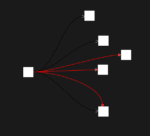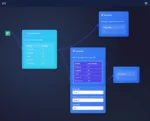In the age of real-time analytics, understanding how and when your data is processed can turn analytical chaos into strategic clarity. At Dev3lop, we empower forward-thinking organizations to cut through the noise with deep domain expertise in Microsoft SQL Server consulting services and high-impact data engineering strategies.
Today, let’s delve into the heart of modern event stream processing—exploring the nuances of event time and processing time windowing patterns, their impact on analytic accuracy, and why mastering these concepts is essential for organizations seeking resilient, timely insights. Take this journey with us as we illuminate the technical undercurrents driving data-driven decision making.
Understanding Event Time vs Processing Time
At the core of any robust streaming analytics solution lies the concept of “time”—but not all time is created equal. “Event time” refers to the actual moment an event occurred, sourced from your data’s embedded timestamps. In contrast, “processing time” is recorded at the point where the event is ingested or processed by your system. While event time empowers your analytics to reflect real-world sequences, processing time offers operational simplicity but may underestimate complexities like out-of-order data or network delays. In mission-critical scenarios—for example, emergency management dashboards—a deep understanding of this distinction is paramount. By aligning your streaming strategies with event time, you mitigate the risks of misleading results while improving your organization’s analytic reliability and responsiveness.
Windowing Patterns: Sliding, Tumbling, and Session Windows
Windowing patterns are the backbone of stream processing: they define how data is grouped for aggregation and analysis. Tumbling windows split data into distinct, non-overlapping blocks—a natural fit for fixed-interval reporting. Sliding windows, by contrast, provide a moving lens that captures overlapping intervals, critical for rolling averages and trend detection. Session windows dynamically group related events separated by periods of inactivity—a powerful model for analyzing user sessions or bursty IoT traffic. The choice of windowing strategy is intimately linked to how you manage time in your streaming pipelines. For further insight into handling late and out-of-order data, we recommend reading about out-of-order event processing strategies, which explore in-depth mechanisms to ensure reliable analytics under imperfect timing conditions.
Designing for Imperfect Data: Correction and Re-windowing Strategies
Real-world streaming data is messy—networks lag, sensors hiccup, and events arrive out of sequence. This calls for sophisticated mechanisms to correct and adjust your aggregations as “straggler” data arrives. Event time windows, coupled with watermarking techniques, help balance trade-offs between completeness and latency. Yet, even with best efforts, you’ll inevitably need to correct previously calculated windows. Our article on re-windowing strategies for stream processing corrections provides actionable approaches to retroactively adjust windows and preserve data fidelity as corrections propagate through your system. Integrating robust correction protocols is not just technical hygiene—it’s central to building trust in your analytics across the organization.
Strategic Implications and Future-Proofing Your Analytics
Choosing the right windowing pattern isn’t a theoretical exercise—it’s a foundational architectural decision impacting scalability, cost, and business agility. Organizations that invest in flexible, event-time-driven architectures are better positioned for future innovation, whether it’s quantum-driven stream processing (quantum computing in data analytics), advanced anomaly detection, or autonomous operations. This is especially true for those managing recursive, hierarchical data—complexity further examined in our exploration of hierarchical workloads. As new opportunities and challenges emerge—such as unlocking dark data or orchestrating canary deployments in production—your streaming foundation will determine how confidently your business can evolve.
Building event-driven architectures that reflect business time, correct for drift, and adapt to evolving demands is no longer optional—it’s a strategic imperative for modern enterprises. Are your pipelines ready for the data-driven future?
Thank you for your support, follow DEV3LOPCOM, LLC on LinkedIn and YouTube.

























